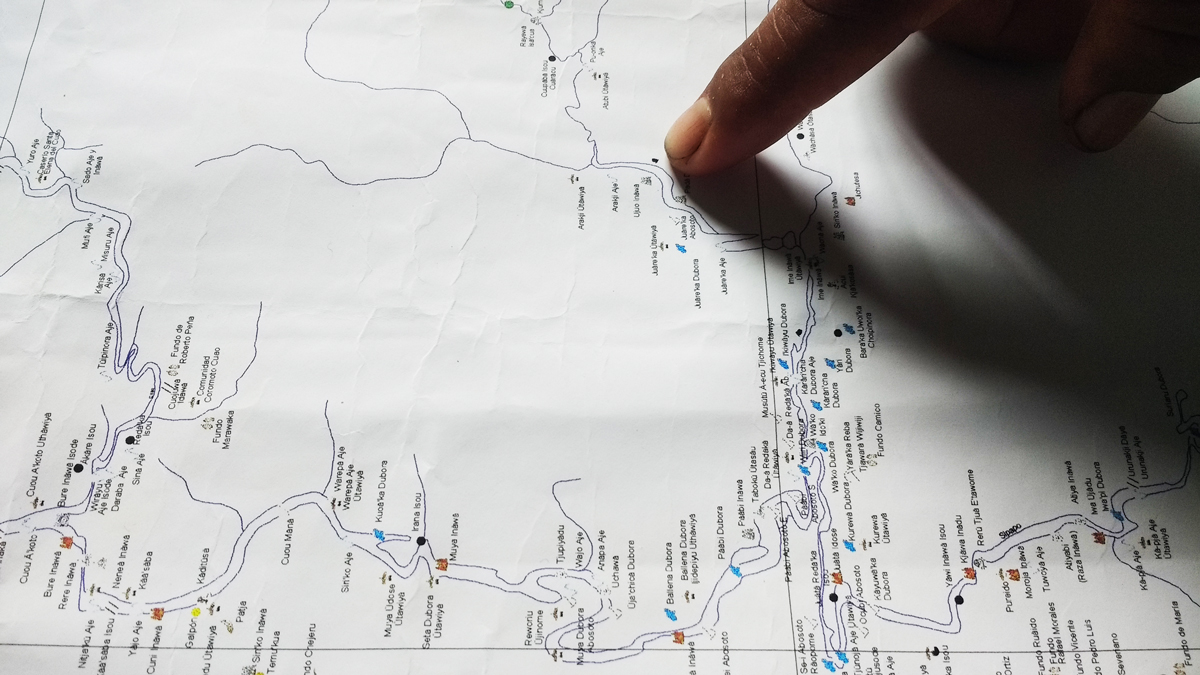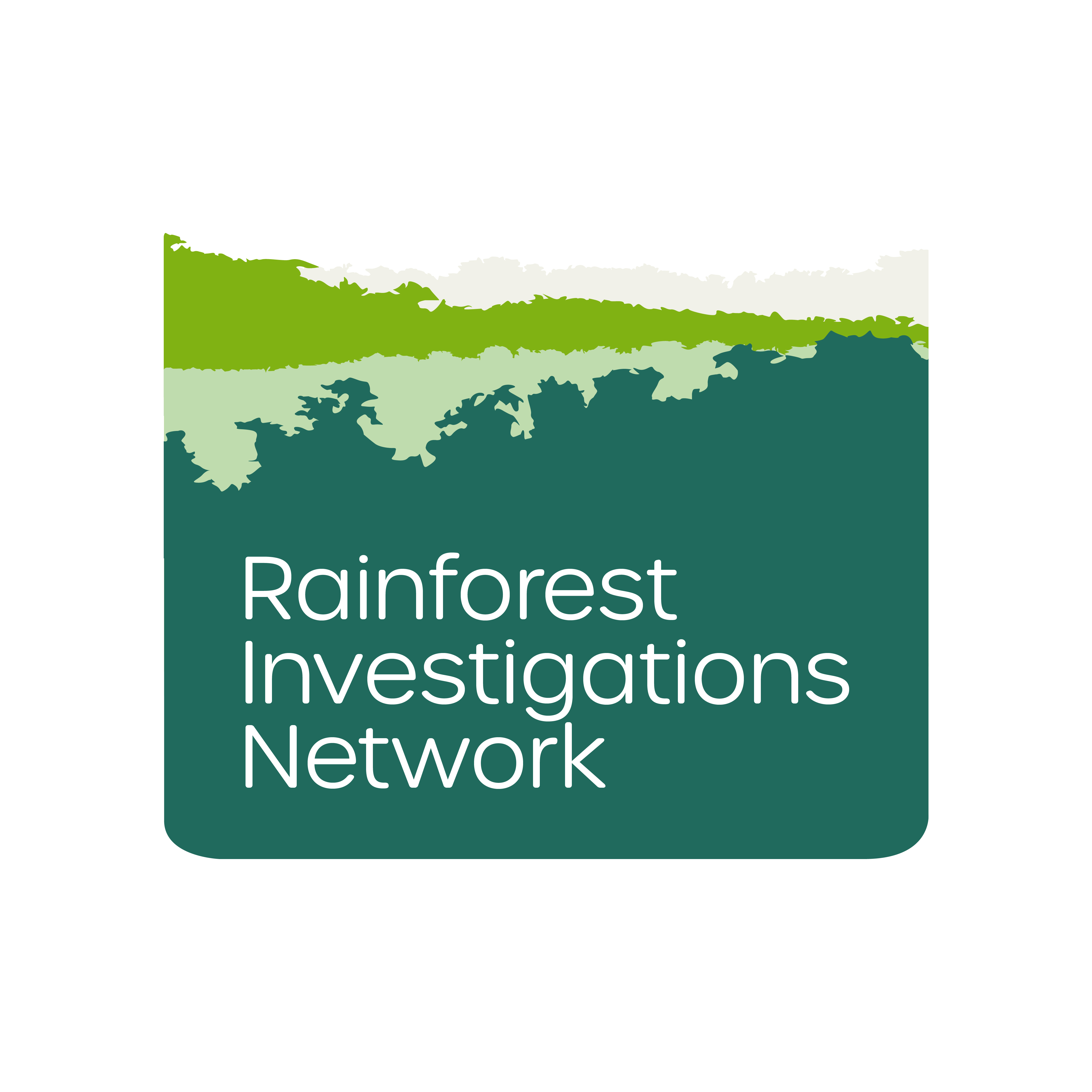Editor’s note: María de los Ángeles Ramírez, Joseph Poliszuk are 2022 Fellows of the Rainforest Investigations Network (RIN), an initiative of the Pulitzer Center. Read their reporting here.
When we finished our 2022 investigation about airstrips tied to illegal mines, we were left with the clues that led to our next project: The Lords of Gold. We had exposed a map of clandestine airstrips, illegal mining areas, and the complex reality fueled by crime in the Venezuelan Amazon. As our next step, we wanted to identify the criminals behind gold smuggling between Venezuela and Brazil, understand their modus operandi, and uncover their corporate networks. We had to create databases, extensively review many judicial files, and do traditional on-the-ground reporting in Venezuela, Brazil, and the United States.
Our main hypothesis was that illegal gold smuggled from Venezuela to Brazil was being paid for or exchanged with food during the greatest food crisis in Venezuela.

As a nonprofit journalism organization, we depend on your support to fund more than 170 reporting projects every year on critical global and local issues. Donate any amount today to become a Pulitzer Center Champion and receive exclusive benefits!
After a year of work, the investigation managed to follow the trail of gold from illegal mines in the Venezuelan jungle—via Brazil—to destinations as distant as India and the United States. We were able to inform the public about a money laundering mechanism that paid and laundered the minerals with food during the country’s worst period of hunger.
After its release, the investigation became a trending topic on social media and was featured on news programs in Venezuela and northern Brazil. United Nations agencies and other international organizations contacted us to understand the main findings of the investigation to include them in their reports and policies. And curiously, two weeks before publication, one of the Lords of Gold escaped house arrest.
Data sources
- National Registry of Legal Entities (CNPJ): In this registry, we found details about the Brazilian companies behind the exchange of gold for food, as well as their directors and associate companies.
- International databases with corporate information: Sayari, Aleph, Open Corporates.
- ImportGenius: A database of imports and exports that can be filtered by products, companies, origin, and destination.
- Comexstat: Here you can search the foreign trade statistics of Brazil by state, product, destination, and origin, among other criteria. The Comex Vis visualization tool was very useful. It allowed us to understand the characteristics of the record-high food exports experienced by the state of Roraima in Brazil, bordering Venezuela.
- Digesto: A paid service to access judicial files. A free alternative to this database of court records is JusBrasil. In both cases, you can search for a person's name and the platform displays the cases associated with that person and the court.
- Commercial Registry in Venezuela (offline access): We used this to track companies linked to the "Lords of Gold”: the key players behind the illegal mining in Venezuela.
- Satellite imagery: We used Google Earth as well as paid access to the online satellite imagery platform Planet. For our second story, we also used high-resolution satellite imagery from Earthrise Media.
- Florida Division of Corporations: The gold lords had companies registered in Florida, and we were able to obtain data and documents through this database.
- UN Comtrade: This is a global foreign trade database that shows the reported overall figures of products imported and exported between countries.
- Social networks: We looked at Instagram, X/Twitter, and Facebook to find contacts and details about companies and people linked to this gold-for-food smuggling scheme.
- Official and unofficial interviews with multiple sources.
- On-the-ground reporting in Brazil, Venezuela, and the United States.
Methodology
The aggressive expansion of illegal mining in Venezuela has been covered for decades. As it has grown, the industry has deforested swathes of the northern Amazon and violated the human rights of local communities. However, the informal networks smuggling the gold have rarely been reported on in a systematic way. With the support from the Pulitzer Center’s Rainforest Investigations Network (RIN) for our previous project, we used artificial intelligence to create the first map of illegal mines and clandestine airstrips. For our second investigation, we had to find a new methodology to document the cases outside the country that Venezuelan justice fails to prosecute, ignores, or even covers up.
- Accessing court records
Combining judicial filings from Venezuela and the Brazilian city of Boa Vista, we looked at cases of gold trafficking from mines south of the Orinoco River, deep in the Venezuelan jungle. This helped us to put together the initial puzzle of organized crime groups, smuggling routes, and money laundering schemes.

We found preliminary documents in the online database of JusBrasil, and with the advice of colleagues and lawyers, we gained access to the actual judicial files, one of which had more than 30,000 pages. When we encountered obstacles in getting information from Brazilian justice, it was necessary to look for allies in Brazil, such as Eduardo Goulart, from OCCRP, who helped us obtain and consult the files.
We learned that gold smuggled across the border entered the Brazilian market under the category of “scrap gold,” referring to gold that has been damaged or is no longer considered useful, like broken jewelry. From this border area, the gold was transferred to one of the main gold exporting companies in Sao Paulo and from there to the rest of the world.
- Building the database
We built databases with more than 30 companies and 70 individuals involved in the exchange of illegal gold for food. We listed the names, identities, companies and mafia structures, and confirmed the data in Brazil’s National Registry of Legal Entities (CNPJ) and Venezuelan registries such as the National Electoral Council.
With this data in hand, we could follow the money trail and the smuggling to show Brazil’s role in laundering illegal gold from southern Venezuela.
The court files included sales and transportation receipts and bank transactions. We found that companies and partners of the governor of the Brazilian state of Roraima, Antonio Denarium, are related to suppliers, beneficiaries, and members of the mafias that send food in Brazil in exchange for illegal Venezuelan gold.
Next, we discovered links and relationships between the mafia groups and crimes committed in the Dominican Republic by the same actors from Brazil and Venezuela. These links configure the map of Amazon gold trafficking in the Caribbean.


We established the map of connections between the main companies participating in the smuggling network, and others, through corporate databases such as Sayari, OpenCorporates, and OCCRP’s Aleph.

- Fieldwork in Venezuela, Brazil, and the United States
Once we organized and processed the judicial information, we went in the field to Boa Vista and Pacaraima, in the state of Roraima, Brazil; and Santa Elena de Uairén, in the state of Bolívar, Venezuela.
Through fieldwork we not only discovered more details about the people and companies involved, but we also learned that the business was still active. Some of the sources and the actors involved in the trade were reluctant to collaborate and respond to foreign journalists. We were asking about a well-known issue that is not talked about publicly and for which there are open cases, detainees, and prosecutions.
So, we had to be insistent.
We were able to go beyond the work of the Brazilian justice system and show that some of the accused were still operating suspicious businesses in that border zone, and were even being supported—either passively or actively—by the State.
One of the traffickers, Marco Flores, not only continues to manage one of the hotels raided in Pacaraima during investigations, but he also obtained a privileged concession with the only gas station that the Venezuelan government has on the border. We confirmed Flores' connection with the gas station by visiting it and conducting interviews there. To connect Flores to the hotel, we cross-checked information printed on receipts from the hotel in Pacaraima with the CNPJ.
In the field, we also obtained data that allowed us to create a new story about a gold trafficker who extracted illegal gold from an Indigenous territory to later transport it through Brazil to the United States.
Online tools were also helpful to complement our work on the ground. After we traveled to the community of Chirikayén in Venezuelan territory, we analyzed satellite images from Google Earth, Planet, and Earthrise Media to evaluate the environmental impact of mining linked to one of the Lords of Gold and his company network. We also reviewed UN Comtrade import and export data and saw that, at a time of sanctions on Venezuelan gold, the United States received this precious metal from Venezuela.
From this starting point, we tracked the gold from Venezuela to the state of Florida before and after the sanctions imposed by the United States.

- Overcoming language barriers
One of the main limitations was the language, since our understanding of Portuguese is limited. Not only did we have to conduct interviews with Portuguese speakers, but we also had to immerse ourselves in hundreds of pages of documents in Portuguese. Our ally at OCCRP, who is Brazilian, was key to conducting interviews and making requests for information, while in the field we had a bilingual reporting partner by our side.
As for the files, we translated them into Spanish, although in some cases we preferred to read them in Portuguese for better understanding. We searched the documents by names and key terms, but in some cases this was not possible because they were not text-based files, so we did an exhaustive page-by-page review. While this was tedious work, the results were worth it.
In this investigation we confirmed that it is necessary to make connections and think outside the box. In Venezuela, we got very little information, but in Brazil we were able to better understand the modus operandi of these gold lords. If you investigate mineral trafficking, research the origin, the transit countries, and the destination. We will continue looking for more gold lords under this premise.








